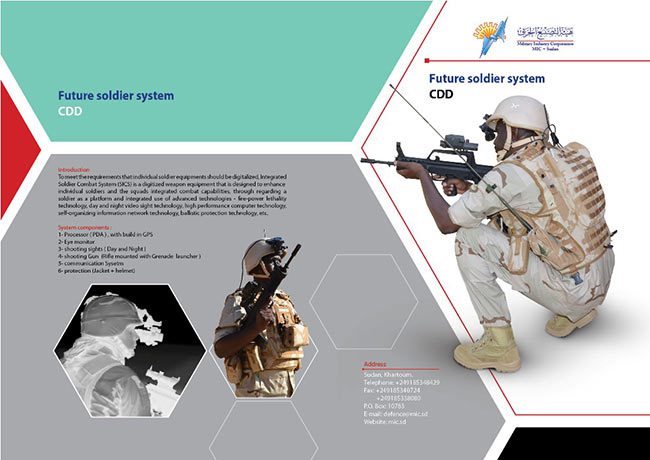In February 2023, the tensions between the RSF and the Sudanese junta reached a critical point as the RSF initiated a recruitment drive, attracting members from various regions of Sudan. This led to a short-lived military buildup in Khartoum. However, in a subsequent development, an agreement was reached to de-escalate the situation, prompting the RSF to withdraw its forces from the Khartoum area.
Intense clashes between Sudan’s military and the country’s main paramilitary force have killed hundreds of people and sent thousands fleeing for safety, as a burgeoning civil war threatens to destabilise the wider region.
The Sudanese armed forces are broadly loyal to Gen Abdel Fattah al-Burhan, the country’s de facto ruler, while the paramilitaries of the Rapid Support Forces (RSF), a collection of militia, follow the former warlord Gen Mohamed Hamdan Dagalo, known as Hemedti.
The power struggle has its roots in the years before a 2019 uprising that ousted the dictatorial ruler Omar al-Bashir, who built up formidable security forces that he deliberately set against one another.
When an effort to transition to a democratic civilian-led government faltered after Bashir’s fall, an eventual showdown appeared inevitable, with diplomats in Khartoum warning in early 2022 that they feared such an outbreak of violence. In the weeks before clashes broke out tensions had risen further.
The clashes erupted in the middle of April amid an apparent power struggle between the two main factions of the military regime.
As the two side struggles to dominate each other on the battlefield, here are three pieces of military equipment that will surely provide a significant advantage for the Sudanese Armed Forces.
Sudanese Army – Future Soldier System “Kombo”
Every soldier and vehicle is linked to a real-time network, in order to track individual soldier’s vitals, activities, and environment. Kombo would increase situational awareness as well as guarantee the soldier’s security.

In 2015, the Sudanese Military Industry Corporation (MIC) launched the development of new combat gear for soldiers of the Sudanese Armed Forces under the name of the “Kombo” Future Soldier System. The program aims to provide Sudanese individual soldier equipment with digital weapon equipment. To that effect, MIC developed the Integrated Soldier Combat System (ISCS or Kombo).
The ‘Kombo’ Future Soldier System is designed to enhance individual soldiers and the squads’ integrated combat capabilities, by regarding a soldier as a platform and integrated use of advanced technologies – fire-power lethality technology, day and night video sight technology, high-performance computer technology, self-organizing information network technology, ballistic protection technology, etc.
The whole system of the new Kombo Future Soldier System includes;
- PDA (Personal Digital Assistant) with GPS (Global Positioning System)
- LCD monitor
- Day/night shooting sights
- QBZ-97 assault rifle with a grenade launcher
- Communication system
- new helmet and individual body armour
Sudan Military Industrial Complex Battlefield Datalink
In 2019, during an interview with the media, Sudan Air Chief talked about the future acquisitions and domestic developments for Sudan’s military. At the time, Lieutenant General Pilot (PSC) Salah al-Din Abdel-Khalig Saed, was Commander of the Sudanese Air Force.
He noted that after a long period of isolation, Sudan is now opening up and modernizing its military assets as part of its participation in the Saudi-led coalition ‘Decisive Storm’ over Yemen.
Salah al-Din Abdel-Khalig Saed explained that the air force adheres to modern warfare principles – with regards to precision-guided ammunition and civil collateral damage, and from strict guidance by radar intercept officers in air-to-air operations – to an approach focused on flexibility and personal responsibility of the individual pilots.
And also, how to plan for close air support operations today and the concept of a ‘Kill Chain’.
“Everything we need is shared with us. And all of that data is combined in our computer-based intel centres. Whether it comes from photos, radar or drones, in today’s conflicts, it is vital to have merged corresponding information. This is often far more important than the subsequent missions themselves. We will improve our efforts in 2019, before the return invitation to Saudi Arabia for Blue Shield 2.”
Owing to the experiences gained during the Blue Shield 2 joint exercises, Sudan began the process of westernizing its equipment aboard many of its aircraft. The net result is that with Western transponders, the situational picture of the country’s air force missions was significantly improved.
Subsequently, Sudan’s MIC developed a tactical military datalink that connected fighters, transporters, helicopters, and drones together to ground control, combined air traffic centres, and intelligence centres.
Tactical data links are very advanced military communication systems that enable the exchange of tactical data between platforms and commands. These systems use a data link standard to provide communication through data cables or radio waves. Standardized tactical data links are used in all military C3 (command, control, and communications) systems to transmit and receive tactical data & information among military forces.
Unmanned Aerial Vehicles (Drones)
Sudan’s small but deadly Chinese and Iranian-made drones have the potential to turn the tide of war in Sudan, where fighting between government forces and various rebel groups has been ongoing for years.
Iran has been supplying drones to Sudan for several years now, and the country’s military has been steadily building up its drone capabilities.
The drones, which are manufactured by Iran’s Aerospace Industries Organization (HESA), come in a variety of sizes and can be used for a range of missions, from reconnaissance to attack. Sudan fields four Ababil-3 drones which they acquired in 2014, and 2 Ababil-2s acquired from HESA in 2011. Another Iranian-made drone that is operated by Sudan is the Mohajer-series drones comprising the Mohajer-2, Mohajer-4, and Mohajer-6 the latest of them.
On the other hand, Sudanese forces also field the Chinese-made Rainbow CH-3 drone. Sudan operates five of them acquired in 2015, and four CH-4s were acquired in 2016.
The Rainbow CH-3 drone is an unmanned aerial vehicle (UAV) developed and produced by China Aerospace Science and Technology Corporation (CASC), a state-owned aerospace and defence company.
The CH-3 is a medium-altitude, long-endurance (MALE) drone that can operate for up to 10 hours at a maximum altitude of 5,000 meters. It has a wingspan of 8.5 meters and a maximum takeoff weight of 640 kilograms.
The use of drones in the conflict in Sudan has raised concerns about civilian casualties and the potential for human rights violations. However, the Sudanese military has stated that it is using drones in a responsible manner and taking steps to avoid civilian casualties.







